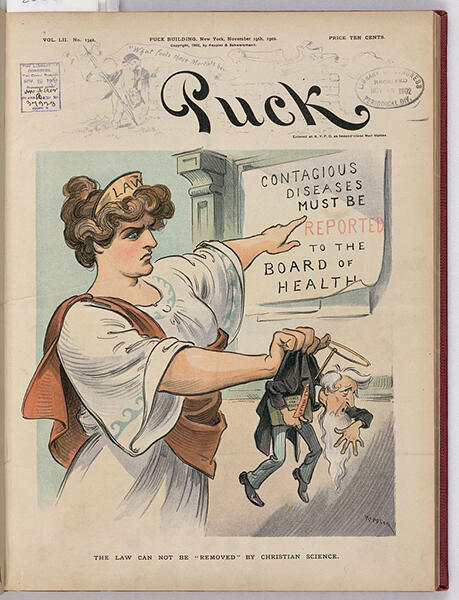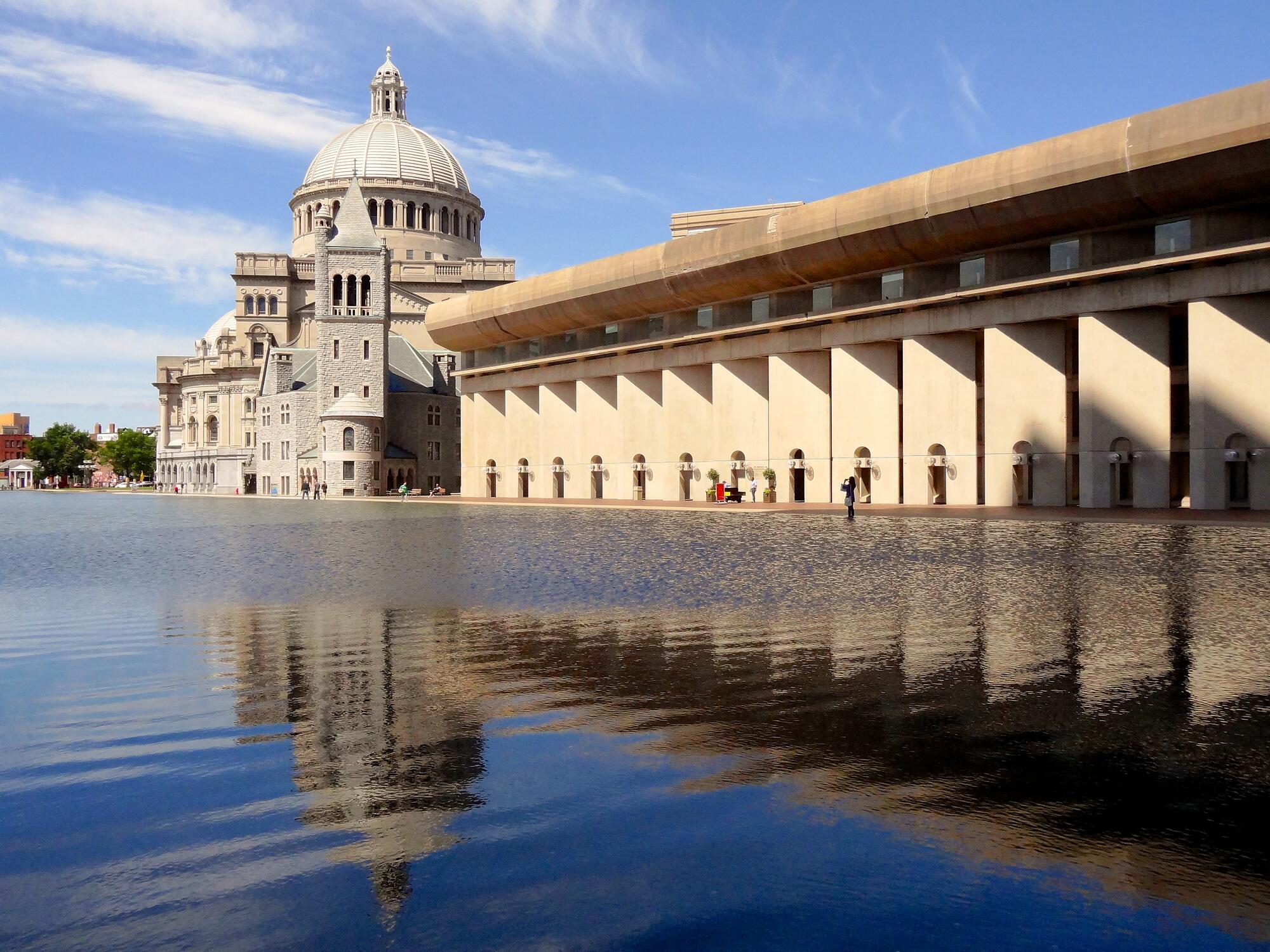Since independence, Christians have always been a majority of the US population, so it may seem curious to call American Christians a minority. However, some Christians have been rejected by the wider US Christian community and are thus “minoritized”—meaning they are treated as if they do not belong to the majority. Christians from such groups have often claimed they face persecution or hardships.
One of these groups is the Christian Scientists. This American born religion began in 1879 in Massachusetts, with teachings of Mary Baker Eddy, who wrote a book called Science and Health, which became a holy text to Christian Scientists along with the Bible. The text describes the material world as an illusion, and the real world as totally spiritual.
Based in this belief, Christian Scientists generally view disease and illness as a mental error, not a physical problem. Thus, to heal ailments, they usually rely on prayer rather than medical care. When members get sick, they call for a “Christian Science Practitioner”—a person certified by the Church, but with no medical credentials—to pray over them for healing in what believers call a “treatment.” They usually refuse to vaccinate their children, take medicine of any kind, or see a doctor, even for emergencies. However, they generally do see doctors for dental procedures, broken bones, and childbirth. Occasionally, Christian Scientists will seek other medical care, but they are often discouraged by the Church from doing so. The Church will not support giving Christian Science treatments to members who are also using modern medical care.
Though the group is small—there has never been more than about 200,000 members —many other Christian groups have been “overwhelmingly hostile” to Christian Science. In the early 20th century, other Christians called Christian Scientists “anti-Christian,” “heretics,” “fanatics,” “sinners,” “abominations,” a “poison,” “evil,” “pagan,” and have even accused them of practicing witchcraft. However, other Christian groups which also believe in faith healing have been allies to the Scientists in health issues in recent years. Fear of Christian Scientists for health reasons is also common. In the early 20th century, many practitioners were criminally charged for practicing medicine without a license. Then and now, fears have been common about the effects of the religion on public health, particularly as its followers are generally not vaccinated, and practitioners often do not report cases of infectious diseases to the government. Outbreaks of disease in the community are indeed common, including four major measles outbreaks from 1985 to 1994, which began among Christian Scientists but quickly spread to other neighbors.

Also, at least 50 Christian Scientists have been charged with murder or manslaughter after their children died of diseases curable by modern medicine. However, despite frequent litigation there has been no judicial consensus over whether practitioners or parents are criminally negligent, or free to deny medical care to children due to freedom of religion. For example, in 1984, Laurie Walker was charged with manslaughter after her four-year-old daughter Shauntay died of bacterial meningitis 17 days after symptoms presented. Walker called for the services of a Christian Science practitioner, but not a doctor. She was convicted by judges who cited the Supreme Court which said in 1944: “parents may be free to become martyrs themselves. But it does not follow that they are free, in identical circumstances, to make martyrs of their children.” However, other cases have ended with acquittal, when the courts decided that parents acted in accordance with laws that guarantee freedom of religion, such as the trial of the Twitchells, whose two-year-old son died of a bowel obstruction in 1986.
Condemnations from other Christians and frequent legal trials are often seen as cruel persecution by Christian Scientists. They believe these actions infringe upon their First Amendment rights, and have argued such in court—often successfully. Still, while many Scientists see themselves as persecuted, they have also held significant power in the US. Christian Scientists are overwhelmingly white, and middle or upper class, and their members have included former directors of the CIA and FBI, congressmen, and presidential advisors. The Church’s lobbying efforts have also been highly successful. Federal insurance programs like Medicaid cover the cost of Christian Science treatments, and in 1974, the federal government granted the Church a religious exemption from child neglect and abuse laws, to prevent parents and practitioners from being charged. Within 10 years, all 50 states had passed similar religious exemptions. However, after many high-profile manslaughter cases in the 1980s and 1990s, several states decided to remove these laws. Still, as of 2016, 34 states continue to exempt Christian Science parents from liability for refusing to provide medical assistance to their children. And while treatments are covered by Medicaid, in 2010 the Church failed in its effort to insert coverage for treatments into the Affordable Care Act. Christian Scientists thus have a complex relationship with power in the United States.
Additional Resources
Primary Sources:
- A Christian Scientist describes the theology behind his faith-healing (published by official Church of Christ, Scientist): http://bit.ly/2sVqzw4
- A Christian Scientist describes her faith-healing and her decisions around medical treatment (published by official Church of Christ, Scientist): http://bit.ly/2s5OXZ8
- A former Christian Scientist, now child rights activist, describes the death of her son from bacterial meningitis after their family did not seek medical care due to their Christian Scientist beliefs: http://bit.ly/2sVmUhD
- Prince v. Massachusetts, Supreme Court case cited by lower courts in Christian Science manslaughter ruling: http://bit.ly/2b4USol
Secondary Sources:
- PBS report on Christian Scientists from Religion and Ethics Newsweekly: http://to.pbs.org/2tor5U9
Discussion Questions
- Why might such a small group of Christians, which many other Christians see as a radical fringe group, still have major power influencing US law?
- How do reactions to Christian Science show internal diversity in the wider American Christian landscape?
- Do you think Christian Scientists suffer from persecution? Why or why not?
- Watch the first two primary sources of Christian Scientists giving testimonies of their healings. What do the two agree on? How are their experiences diverse?
- Listen to the description of Rita Swan’s experience in the church in the third primary source. Who seems to hold power in the church? Who lacks power? How does this influence the religion?
- Look at the political cartoon on this page from the cover of the popular magazine Puck in 1902, which depicts a personification of US law holding a Christian Science practitioner. What does this piece say about public opinion and Christian Scientists? How has the artist portrayed each figure, and how does this affect your interpretation?

